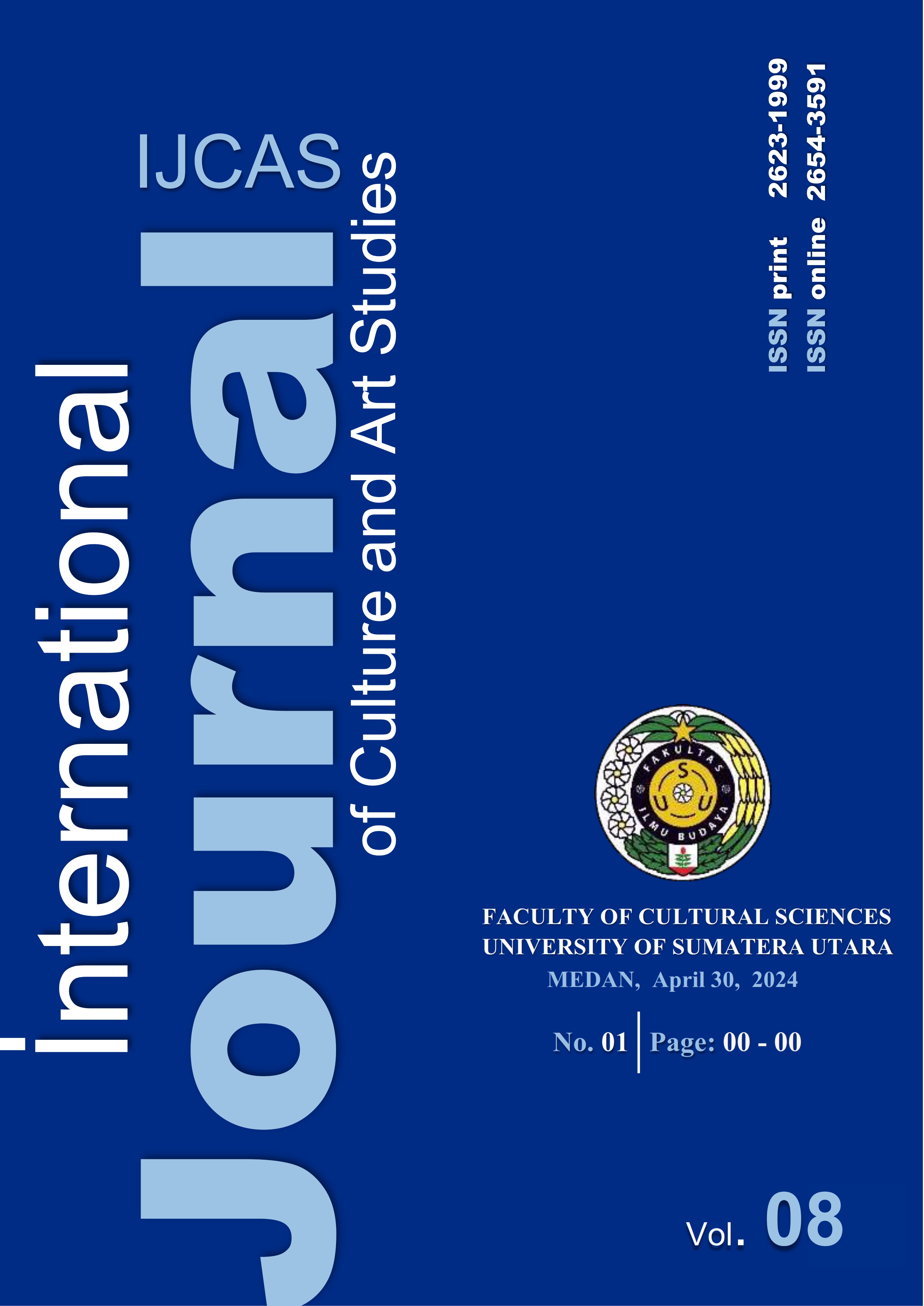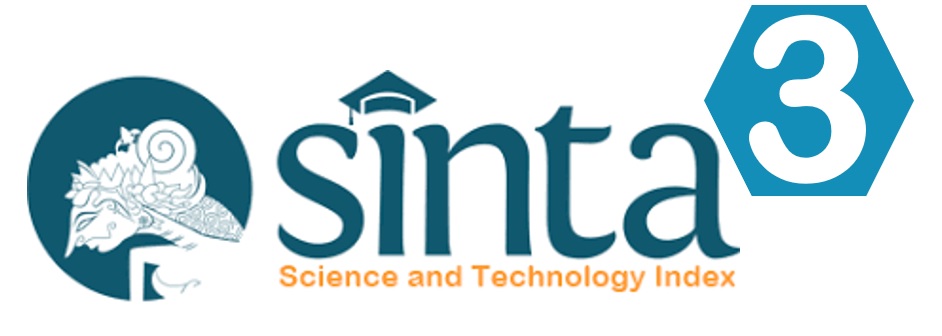Cultural Encounters: Puppetry Performing Arts (Wayang) and Dangdut Music as a Reflection of India-Indonesia Integration
DOI:
https://doi.org/10.32734/ijcas.v8i1.15333Keywords:
Cultural, Wayang, Music, India, IndonesiaAbstract
The purpose of this research is to reveal the relationship or social and cultural influence of the Indian nation on the expression of performing arts (wayang) and dangdut music in Indonesia. The hope of this research is to increase public awareness of the identity of national performing arts and music, which is rarely realized to be heavily influenced by Indian culture. Specifically, the aspects examined in this research include changes in the content of stories from Indian epics in the adaptation of Indonesian performing arts, as well as dangdut music that adapts the energetic spirit of music and dance from India. The method used in this research is qualitative with primary data sources derived from scientific articles and books related to the research. The data validation analysis technique used in this research is triangulation. Triangulation is used as a means of comparing the amount of data, to determine its consistency and accuracy, which will be displayed in the research. The results of this study show that, the culture brought by India is not really one hundred percent imitated or copied by the Indonesian people. The author concludes that the hybridity that occurs between Indian and Indonesian culture actually forms a new innovation in the field of art itself or can also be called a new work. The Mahabharata and Ramayana stories, which were originally the source of puppetry, changed and adapted to Indonesian culture. As a result, there are many compositions of the two epics, character changes, and the emergence of new characters that do not exist in the Mahabharata and Ramayana themselves, such as the punakawan characters that are closely related to the spread of Islam in Indonesia. The same goes for dangdut, a music that was originally based on the character of Malay music from Indonesia, now transformed into a new genre called dangdut due to the influence of India, through political elements and the spread of Indian movies in the 20th century.
Downloads
References
Afrianti, D. (2020). Transformation of the Spread of the Manunggaling Kawula lan Gusti Concept in Javanese Society from the 16th Century AD to the 21st Century AD. International Journal of Islamic Khazanah, 9(1), 29–34. https://doi.org/10.15575/ijik.v9i1.9018
Cohen, M. I. (2007). Contemporary Wayang in global contexts. Asian Theatre Journal, 24(2), 338–369. https://doi.org/10.1353/atj.2007.0032
Dwitayasa, I. M. (2023). Women’s Faithfulness In The Ramayana Epic. ICOHIS: INTERNATIONAL CONFERENCE ON HINDU STUDIES, 1(1), 217–231. https://conference.uhnsugriwa.ac.id/index.php/icohis/article/view/19/50
Fawaid, A., Udasmoro, W., & Margana, S. (2022). Islam Behind the Court Wall: Politics and Aesthetics of Javanese Islam in Babad Tanah Jawi. Proceedings of the International Symposium on Religious Literature and Heritage (ISLAGE 2021), 644(Islage 2021), 76–84.
Fossey, E., Harvey, C., Mcdermott, F., & Davidson, L. (2002). Understanding and evaluating qualitative research. Australian & New Zealand Journal of Psychiatry, 36, 717–732. https://journals.sagepub.com/doi/epub/10.1046/j.1440-1614.2002.01100.x
Ilyas, M. (2020). Planting the Character of Islamic Education During The Demak Kingdom and Its Relevance Today. Al-Hayat: Journal of Islamic Education, 4(2), 181. https://doi.org/10.35723/ajie.v4i2.92
Jupriono, D. (2021). Erotica in Mahabharata and Ramayana. International Journal of Educational Research and …, 619–628. https://www.ijersc.org/index.php/go/article/view/113%0Ahttps://www.ijersc.org/index.php/go/article/download/113/93
Sandi Untara, I. M. G., & Sri Rahayu, N. W. (2021). BISSU: ANCIENT BUGIS PRIEST (Perspective On The Influence Of Hindu Civilization In Bugis Land). Vidyottama Sanatana: International Journal of Hindu Science and Religious Studies, 5(2), 191. https://doi.org/10.25078/ijhsrs.v5i2.3032
Seneviratne, K. (2008). Turning the Tide of Cultural Imperialism with Dangdut. Media Asia, 35(4), 225–232. https://doi.org/10.1080/01296612.2008.11771962
Setiawan, A. (2022). Polemic and Reasons for Reusing Wayang and Gamelan as A Medium for Contemporary Preaching Islam Religion in Central Java, Indonesia. Harmonia: Journal of Arts Research and Education, 22(2), 254–267. https://doi.org/10.15294/harmonia.v22i2.37525
Sezgin, Y., & Künkler, M. (2014). Regulation of religion and the religious: The politics of judicialization and bureaucratization in India and Indonesia. Comparative Studies in Society and History, 56(2), 448–478. https://doi.org/10.1017/S0010417514000103
Stark, M. T. (1998). The transition to history in Southeast Asia: An introduction. International Journal of Historical Archeology, 2(3), 163–174. https://doi.org/10.1023/A:1027316108205
Subagia, I. N., Putrawan, I. N. A., & Astawa, I. N. T. (2021). Bhisma Parwa : Value of Loyalty and Work Ethos. Journal of Positive Psychology & Wellbeing, 5(3), 1116–1123.
Subiyantoro, S., Susilaningsih, Kurwidaria, F., Fahrudin, D., & Wijaya, Y. S. (2021). Tracing the traces of Roman Panji & its influence on mask art in Bobung, Yogyakarta, Indonesia. Budapest International Research and Critics Institute (BIRCI-Journal): Humanities and Social Sciences, 4(4), 10656–10664. https://www.semanticscholar.org/paper/Tracing-the-Traces-of-Roman-Panji-%26-Its-Influence-Subiyantoro-Susilaningsih/fc9e205dfb493cb074bee21b87733cc8019c1837
Thurmond, V. A. (2001). The point of triangulation. Journal of Nursing Scholarship, 33(3), 253–258. https://doi.org/10.1111/j.1547-5069.2001.00253.x
Trivedi, S. (2010). Early Indian Influence in Southeast Asia. India Quarterly: A Journal of International Affairs, 66(1), 51–67. https://doi.org/10.1177/097492841006600104
Weintraub, A. N. (2010). DANGDUT STORIES: A Social and Musical History of Indonesia’s Most Popular Music. Oxford Press.
Weintraub, A. N. (2013). The Sound and Spectacle of Dangdut Koplo : Genre and Counter-Genre in East Java. Asian Music, 44(2), 160–194. https://www.jstor.org/stable/24256937
Zaman, M. T. (2015). Socio-Cultural Relations Between India and Indonesia. International Seminar and Conference 2015: The Golden Triangle (Indonesia-India-Tiongkok), Interrelations in Religion, Science, Culture, and Economic., 66–69.
Downloads
Published
How to Cite
Issue
Section
License
Copyright (c) 2024 Akbar Bagaskara, Umilia Rokhani, Septiana Wahyuningsih

This work is licensed under a Creative Commons Attribution-ShareAlike 4.0 International License.













